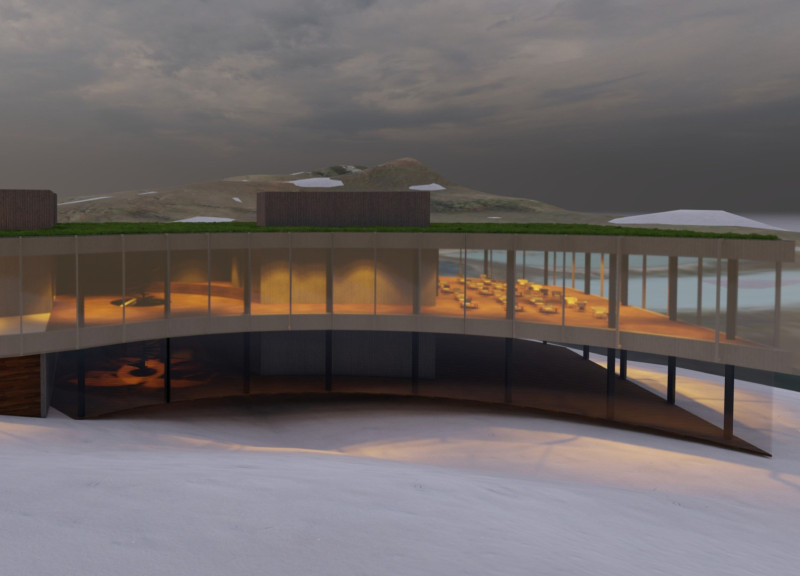5 key facts about this project
KVIKA is an innovative project that combines a restaurant with a greenhouse, located in the distinct climate of Iceland. The design focuses on promoting sustainable practices by integrating food cultivation directly into the dining experience. This approach allows diners to enjoy fresh produce while engaging with the process of its growth, highlighting the connection between nature and food.
Design Strategy
The project employs bioclimatic principles, aimed at optimizing the building's performance in a challenging environment. With temperatures averaging -0.5°C, careful consideration has been given to orientation and thermal control. Features such as large windows and natural ventilation enhance airflow and sunlight penetration, creating a comfortable atmosphere for both the greenhouse and restaurant areas.
Material Selection
Reinforced concrete is used for the walls and slabs, providing a solid structure that can withstand the harsh Icelandic weather. This choice is not only practical but also contributes to the longevity of the building. Alongside concrete, basaltic rock plays an important role in insulation and stability, helping to regulate temperatures throughout the year.
Landscape and Outdoor Engagement
A significant aspect of KVIKA is its roof garden, which elevates the overall experience. This green space adds beauty to the structure and serves as a habitat for local wildlife. It also acts as an outdoor dining area, allowing guests to connect with the surroundings while enjoying their meals. The design emphasizes a relationship between the built and natural environments, enhancing the sense of place.
Sustainability Integration
Throughout the project, a strong emphasis is placed on sustainability. By integrating agricultural practices into the urban landscape, the design serves as a practical example of how to combine food production with dining. The thoughtful arrangement of spaces allows for a direct experience of both cultivation and consumption. Above the restaurant, the roof garden provides a refreshing touch of greenery, bridging the gap between nature and the dining table.






















































